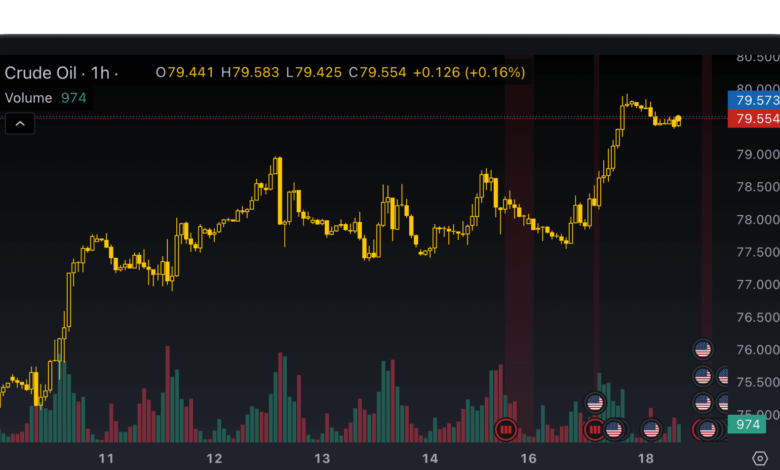Trading: The Engine of the Global Economy

Trade is one of the oldest and most important activities in human civilisation. Essentially, trade is the exchange of goods, services, or financial products between two or more parties. From old barter systems to modern digital markets, trade has developed dramatically, but its purpose remains the same. It creates value and facilitates economic growth.
Today, “trade” often refers to the buying and selling of financial assets such as stocks, raw materials, currencies, and derivatives. This is a fundamental part of the global financial system and an essential driver for investment, innovation and assets. A short history of trade
This trade resolves thousands of years when early civilizations were exchanged, including spices, textiles, and precious metals. The company is being developed, including trading systems. For example, the Silk Road connects Asia and Europe, allowing for the exchange of culture and trade.
In the 17th century, the creation of formal stock exchanges such as the Amsterdam Stock Exchange laid the foundation for modern financial trade. Since then, the market has become even more demanding due to the development of electronic trading platforms, global stock exchanges and financial products. Types of trade
Today’s trade can be divided into different categories, depending on the market and equipment involved.
Stock trading:
Includes buying and selling of shares from listed companies. Dealers will try to profit from price movements in the short or long term.
Forex Trading:
Currency markets (forex) are the largest and most fluid in the world where currencies are traded in pairs (such as EUR/USD). Its 24-hour type and high volatility make it popular with retailers.
Raw Materials Trade:
Dealers buy and sell raw materials such as oil, gold, silver and agricultural products. These markets are often affected by global events, weather patterns and geopolitical tensions.
Cryptoandel:
A new form of trade, including digital currencies such as Bitcoin, Ethereum and thousands of alternative coins. The cryptoma market is known for its extreme volatility and 24-hour work.
Delivery trade:
Includes financial contracts such as futures and options to hand over value from underlying assets. Dealers use derivatives to speculate or protect against price fluctuations. Invested Day Trading vs. Dealers are usually short-term participants who are concentrated in market time, and investors maintain positions based on basic values in the long run.
Trade mechanisms
This trade works on a stock exchange that serves as a market for buyers and sellers. These are traditional stock exchanges such as Nysis and digital platforms for forex, crypto and other assets.
Participants submit an order for the purchase or sale of the assets, which are adjusted based on price and availability. Depending on your strategy and tools, the transaction may be performed manually or via algorithms.
Most of today’s transactions are run electronically, and thus high-speed internet, trading software and real-time data are essential components.
Major Trade Strategies
There are various strategies that dealers use to beat the market.
Scalping: Includes production of dozens or hundreds of small trades in a day to acquire small price movements.
Day trading: Positions will be opened and closed on the same trading day. This avoids the risk overnight.
Swing Trading: Dealers aim to last for days or weeks and benefit from medium term trends. The trends are as follows: It includes long-term market trends and ride quality.
Basic analysis: Focuses on the financial health of financial value, including company income and company macroeconomic indicators.
Technical Analysis: Use historical price charts, patterns and metrics to predict future price movements.
Strategies do not guarantee success, with most professional dealers emphasizing discipline, risk management and ongoing learning.
Trade tools
Modern dealers access a variety of tools to make well-discovered decisions.
Trade platforms such as Metatrader, TradingView, or Ownership Securities Platforms provide diagrams, indicators, and order execution. News Feed provides real-time updates on economic events, corporate income and geopolitical developments.
Analytical tools can help you analyze trends, volatility and market moods.
Risk management features such as stop loss ordering and location size calculators can help you control potential losses.
Risk and rewards
Trade can be advantageous, but that is also dangerous. The market is influenced by countless factors, many of which are unpredictable. Common risks include:
Market risk: risk of losses due to adverse price movements.
Log Risk: The use of borrowed capital can increase both profits and losses.
Emotional risk: Trade can cause strong emotions such as fear and greed, leading to impulsive decisions.
Liquidity risk: In a market with low volume, it is difficult to enter or leave at the desired price.
Successful trading requires not only skills, but emotional discipline, solid planning and the ability to effectively manage risk. The role of economic and trade
Trade achieves more than personal gains. It plays an important role in the broader economy:
Price Discovery: The market determines the time value of an asset through trading activities.
Liquidity: Active Trade ensures that you can buy and sell assets quickly. This supports financial stability.
Capital allocation: Investment from trade channels is money from companies and industries with potential for growth.
Protection and risk transfer: Companies use trade to protect risks such as currency fluctuations and raw material prices. Diploma
Trade is an important part of the modern financial ecosystem. Whether it’s a retail investor who buys stocks through a smartphone app or a hedge fund that uses complex algorithms to run high-frequency businesses, the basic principles remain the same. Market understanding, risk management, and appropriate decisions.
Conclusion
Transactions are not without challenges, but offer exciting and dynamic ways to those interested in finance, economics and strategy. With proper knowledge and right mindset, trade is more than just striving for profit. It can be a lifelong journey of learning and growth.